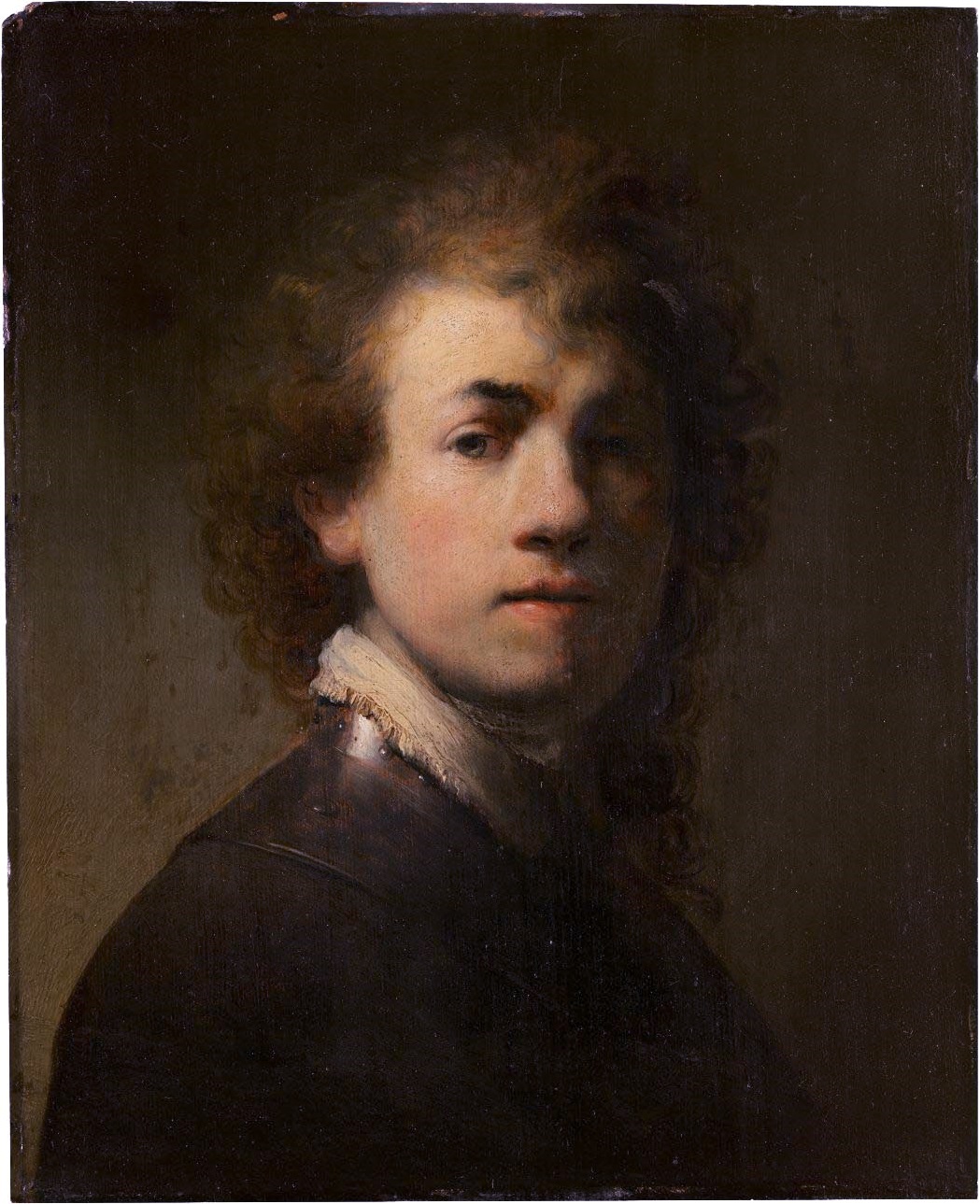



Rembrandt van Rijn
Rembrandt Harmenszoon van Rijn (1606-1669), better known as Rembrandt, was a Dutch painter, printer and draughtsman. He was born in Leiden july 15th 1606 as the second youngest child of Harmen Gerritszoon van Rijn (1567/68-1630) and Neeltgen Willemsdochter van Zuytbrouck (ca 1569-1640). His father was a miller, his mother was a daughter from a well to do baker. Rembrandt’s birthplace was at Weddesteeg 25, opposite De Rijn, the mill of which his father was the miller and the owner. Rembrandt attended the local Latin school. 1620, at the age of 14, he enrolled the university of Leiden to study humanities. Possibly Rembrandt there acquired a thorough knowledge of biblical and mythological stories. Probably from 1622 on he had an apprenticeship with Jacob van Swanenburg (a painter in Leiden) and after that with Pieter Lastman (Amsterdam).
Around 1625 he set up his own studio in Leiden. His earliest paintings show a huge influence of Pieter Lastman. Between 1631 and 1635, in the studio of art dealer Hendrick Uylenburg, Rembrandt painted a large number of portraits of important, rich Amsterdam citizens. 1634 he married Saskia Uylenburg, Hendrick Uylenburg’s niece. After living and working a long time in rented dwellings, 1639 Rembrandt, being a very succesfull artist, bought a stately house for which he paid 13.000 Dutch guilders, an enormous amount of money for those days. This house is nowadays a museum, Het Rembrandhuis at the Jodenbreestraat in Amsterdam. Their first three children died before they were a month old. It was only their fourth child, Titus (1641-1668) who would live into adulthood. 1642 Rembrandt finished the very large group portrait of a city militia, which later would be titled De Nachtwacht (The Night Watch). His wife, Saskia, died 1642. After an unfortunate affair with Geertje Dircks, who nursed Titus after Saskia’s death, he got into a relationship with Hendrickje Stoffels. Initially she started as his housekeeper. Because of a stipulation in Saskia’s will he could not marry her, but the couple stayed together unmarried till her death 1663. They had a daughter, Cornelia (1654-1684).
After 1650 for various reasons Rembrandt got in ever deepening financial problems and 1656 he had to file for bankruptcy. His house and the entire contents were sold at an auction. He had to rent a small house at what is called nowadays the Rozengracht. Although his reputation had been damaged and getting less commissions from the Amsterdam elite, Rembrandt still was a very populair painter. In order to prevent that his creditors could seize the revenues of his work, Hendrickje and Titus set up an art gallery with Rembrandt as an employee. His payment was in kind: board and lodging. Rembrandt died october 1669 and was burried in a grave in the Westerkerk.
Rembrandt was a prolific and versatile master across three media, he is generally considered one of the greatest visual artists in the history of art and the most important in Dutch art history. Unlike most Dutch Masters of the 17th century, Rembrandt's works depict a wide range of style and subject matter, from portraits, self-portraits, to landscapes, genre scenes, allegorical and historical scenes, biblical and mythological themes as well as animal studies. His contributions to art came in a period of great wealth and cultural achievement that historians call the Dutch Golden Age when Dutch Golden Age painting, although in many ways antithetical to the Baroque style that dominated Europe, was extremely prolific and innovative, and gave rise to important new genres in painting.
Rembrandt never went abroad, but he was considerably influenced by the work of the Italian old masters and Netherlandish (Low Countries) painters who had studied in Italy, like Pieter Lastman, the Utrecht Caravaggists, and Flemish Baroque Peter Paul Rubens. Having achieved youthful success as a portrait painter, Rembrandt's later years were marked by personal tragedy and financial hardships. Yet his etchings and paintings were popular throughout his lifetime, his reputation as an artist remained high, and for twenty years he taught many important Dutch painters.
Rembrandt's greatest creative triumphs are his portraits of his contemporaries, self-portraits and illustrations of scenes from the Bible. His self-portraits form a unique and intimate biography, in which the artist surveyed himself without vanity and with the utmost sincerity. His reputation as the greatest etcher in the history of the medium was established in his lifetime, and never questioned since. Few of his paintings left the Dutch Republic whilst he lived, but his prints were circulated throughout Europe, and his wider reputation was initially based on them alone.
In his paintings and prints he exhibited knowledge of classical iconography, which he molded to fit the requirements of his own experience; thus, the depiction of a biblical scene was informed by Rembrandt's knowledge of the specific text, his assimilation of classical composition, and his observations of Amsterdam's Jewish population. Because of his empathy for the human condition, he has been called "one of the great prophets of civilization."